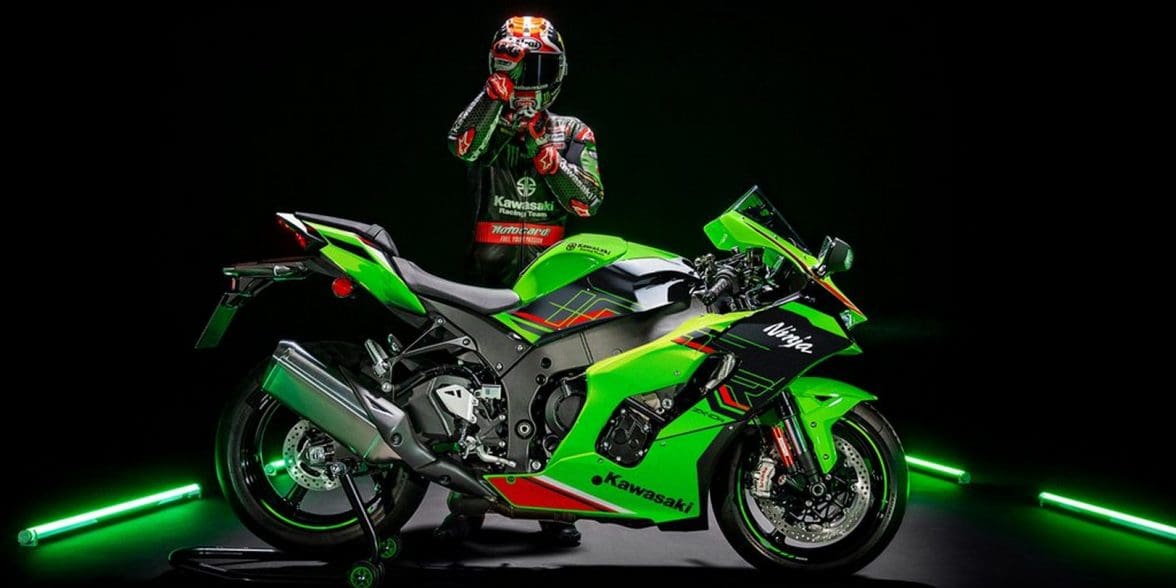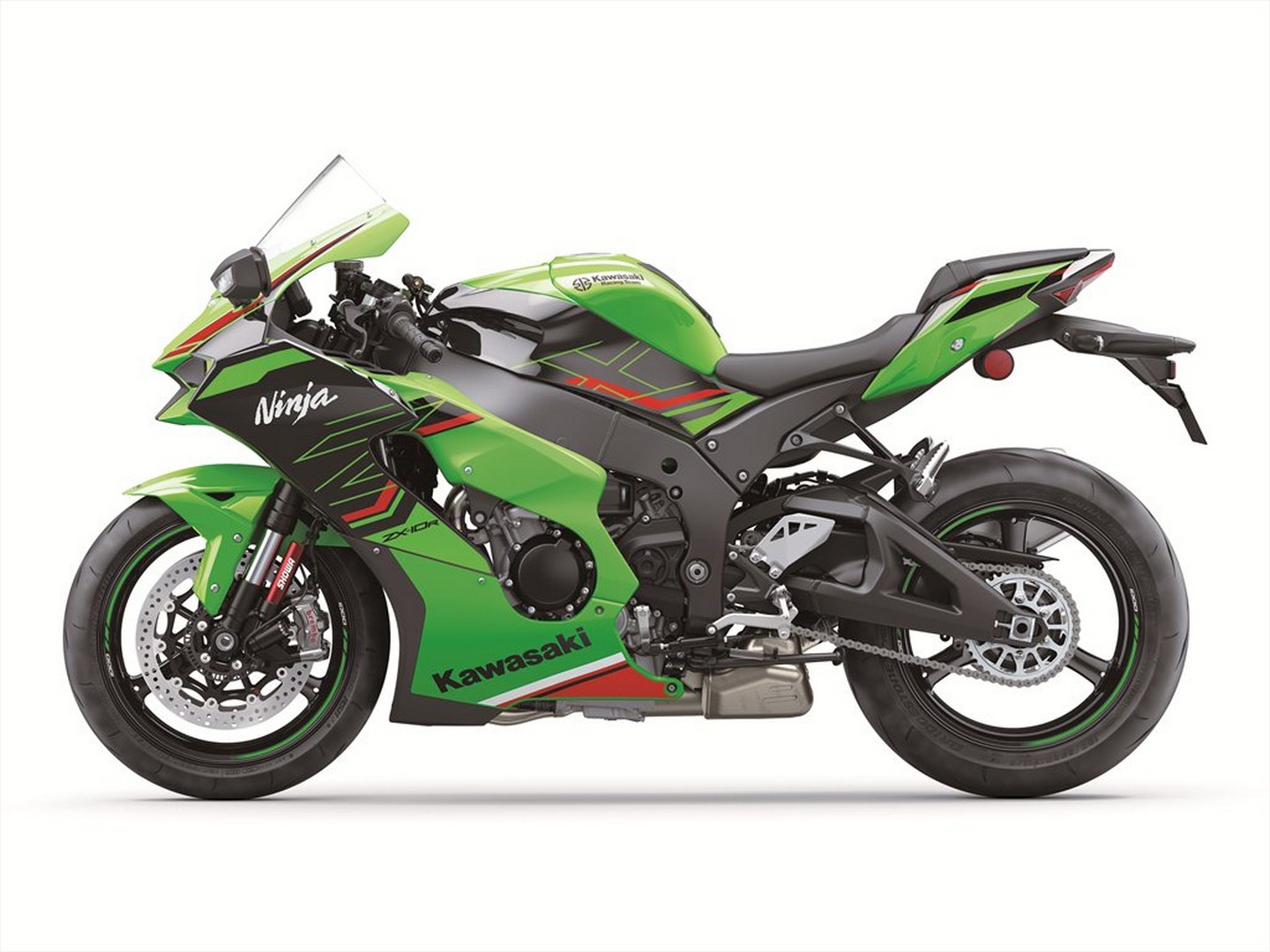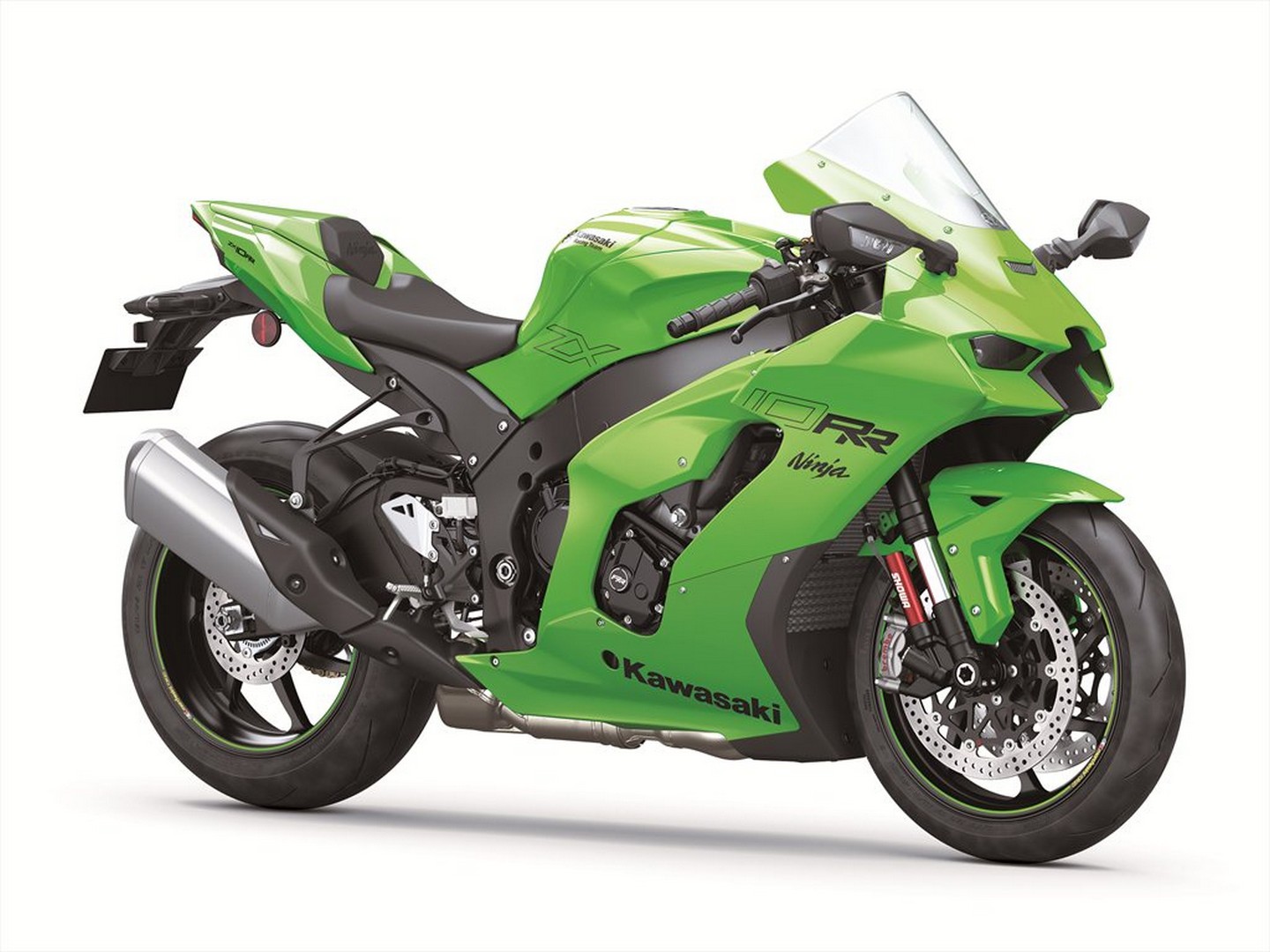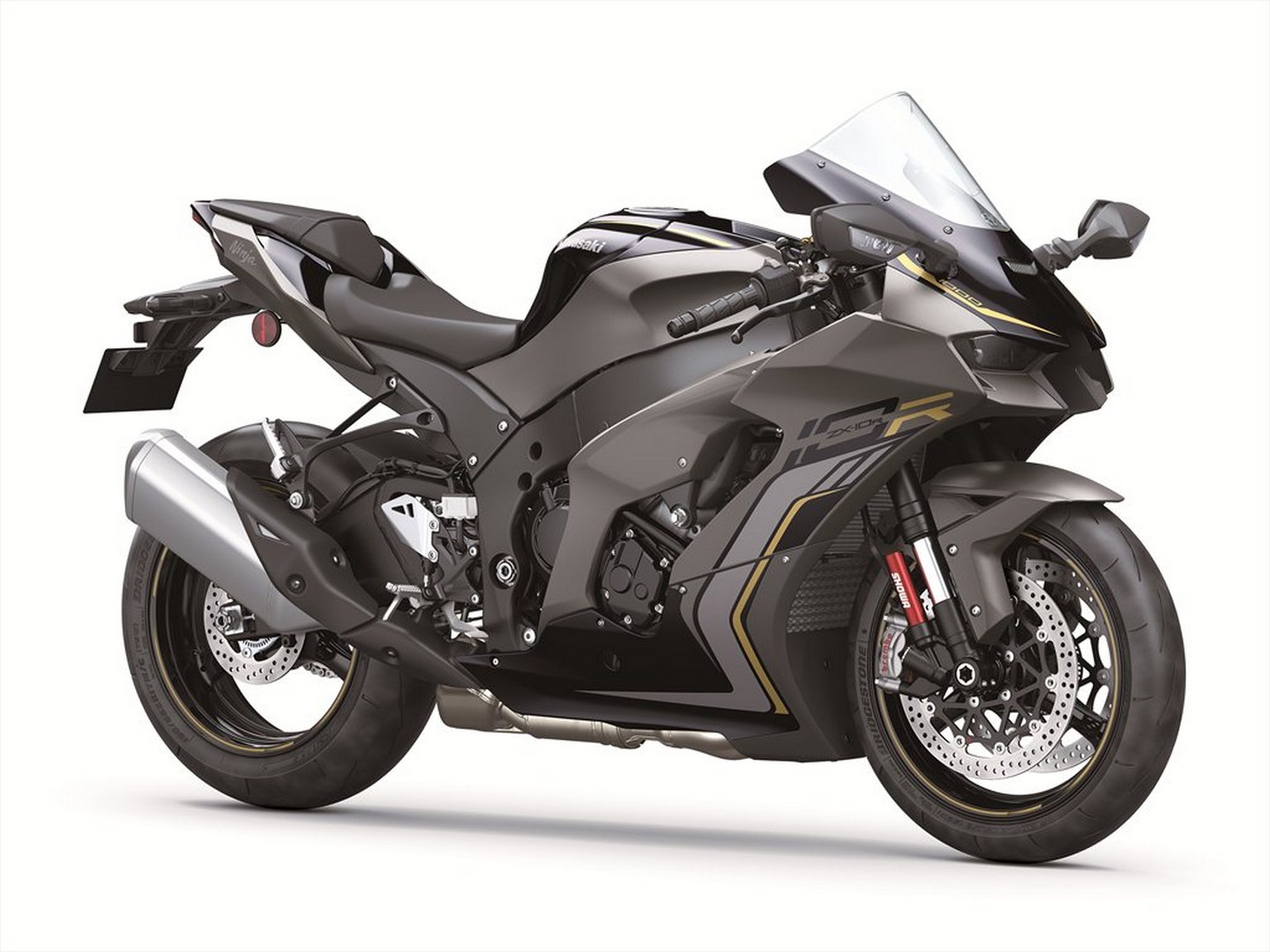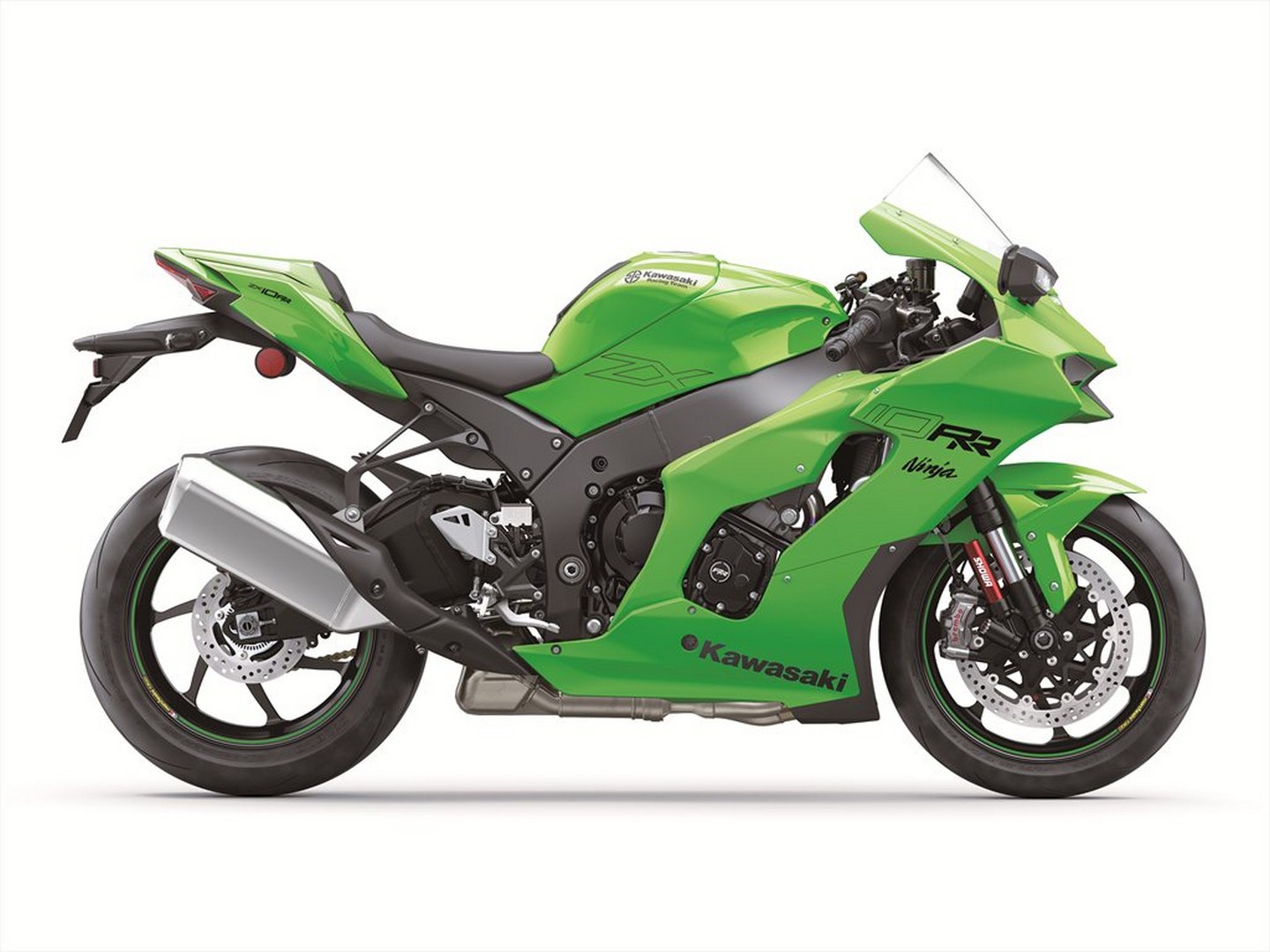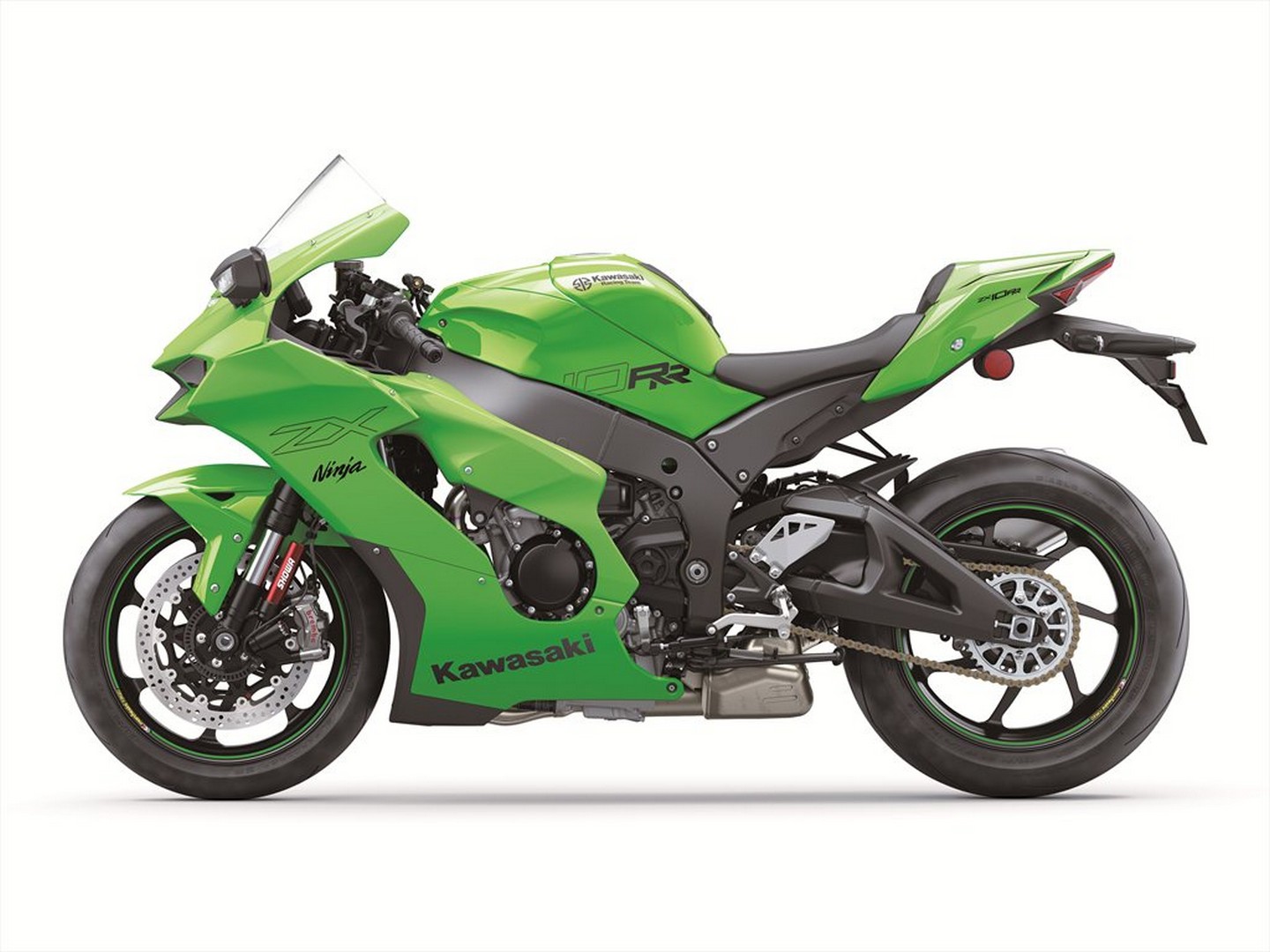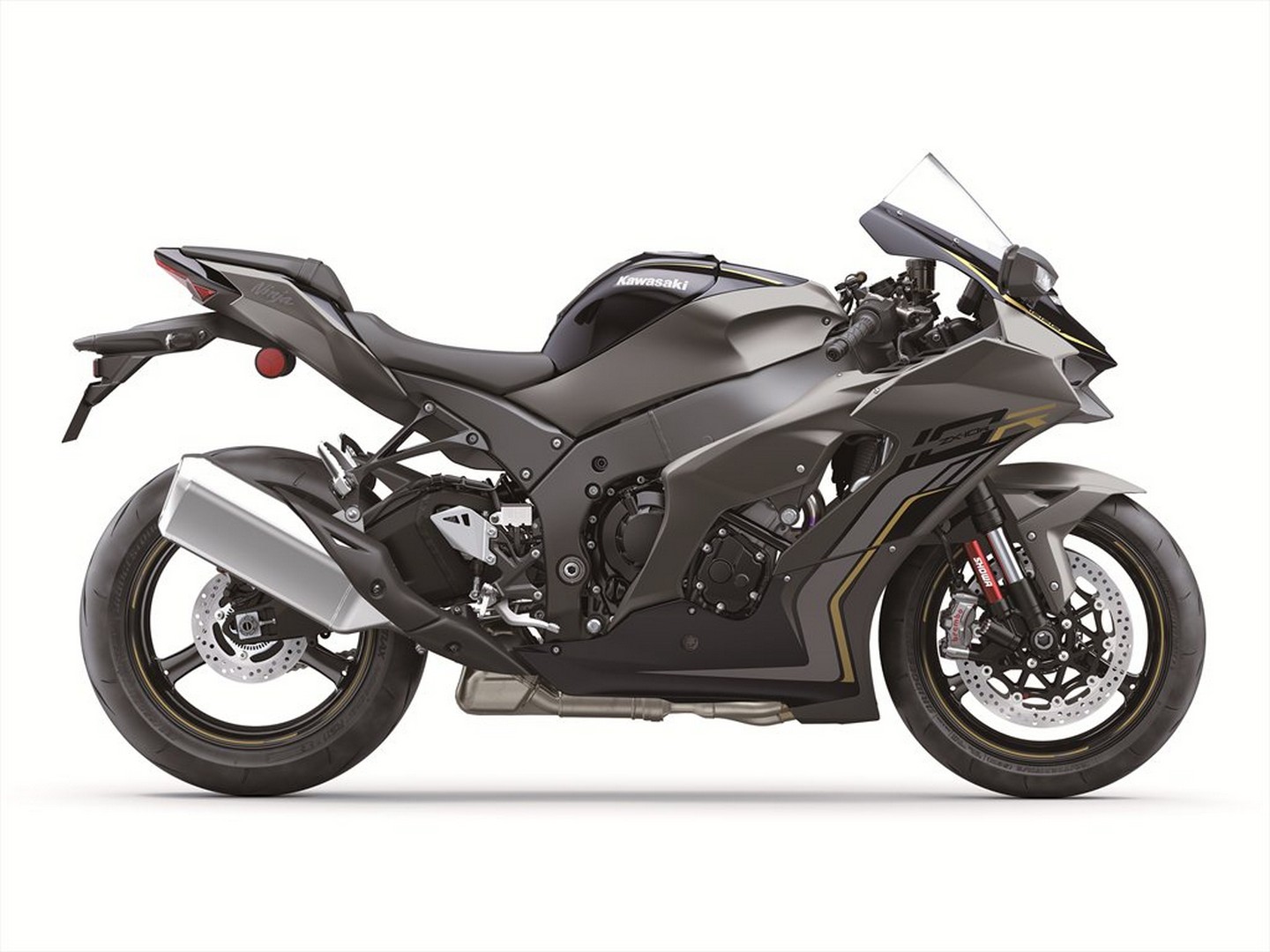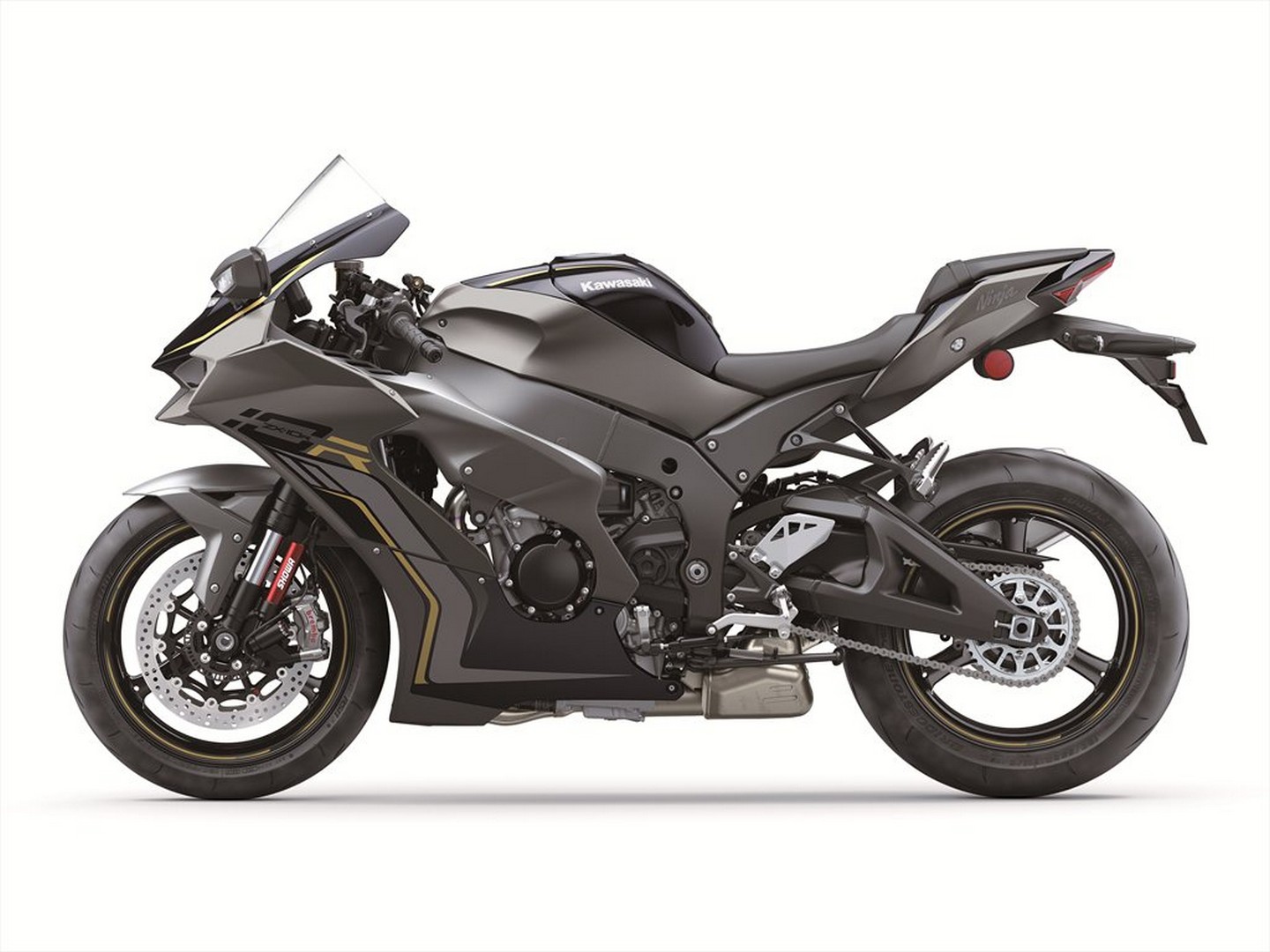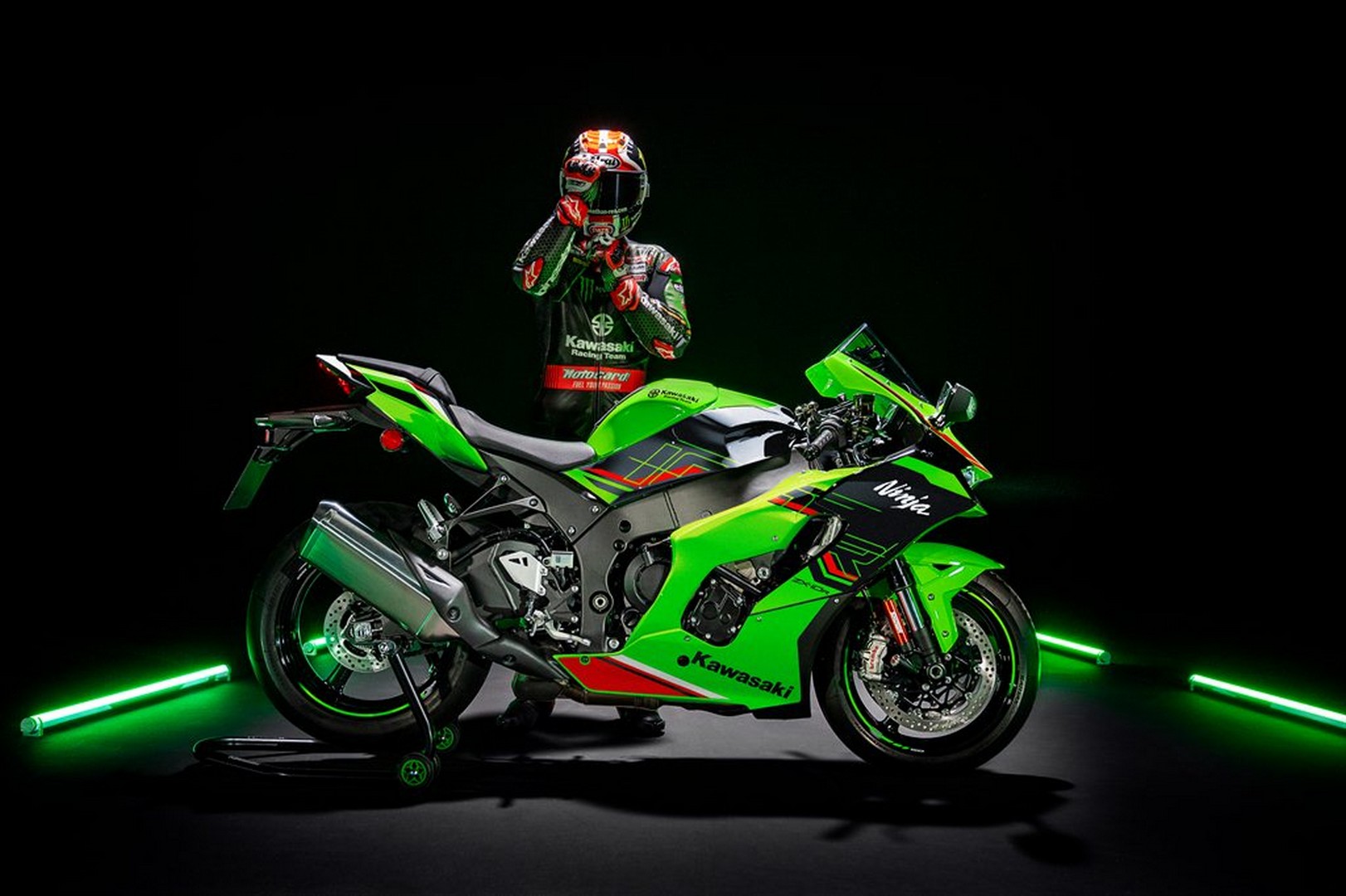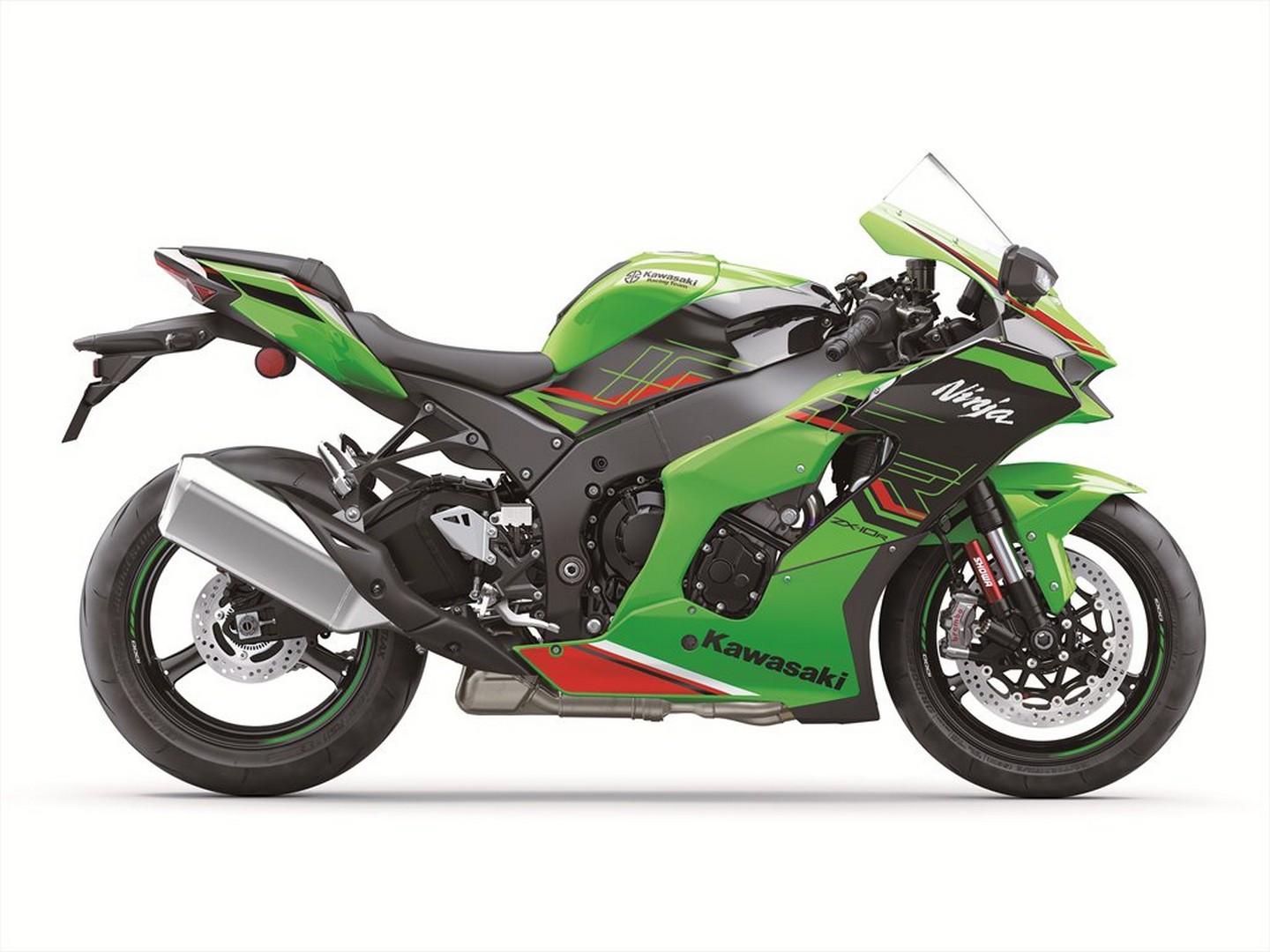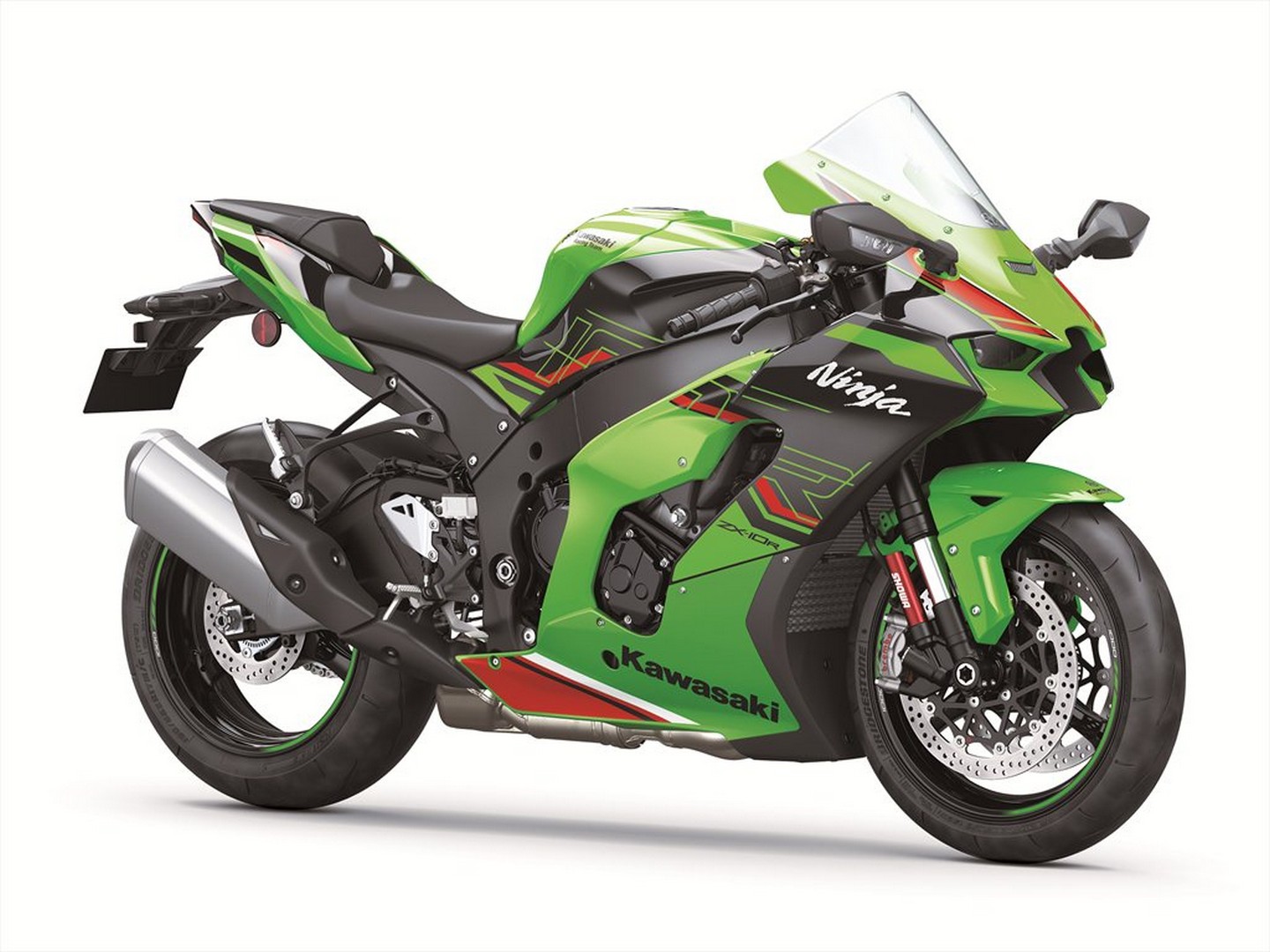The 2023 Kawasaki Ninja ZX-10R Raises The Bar For The 1000cc Class
Contents
The 2023 Kawasaki ZX10-R is a stunning machine that boasts a powerful 998cc engine that can generate an impressive 203 horsepower, making it one of the most potent machines in the class of Japanese supersports. The engine is paired with a six-speed transmission system that allows riders to switch gears effortlessly, enabling a smooth and thrilling ride and with multiple power modes, you can change the bike’s behavior in seconds. The bike’s aerodynamic body design with integrated winglets complements its performance by minimizing drag and enhancing stability at high speeds.
The Ninja ZX-10R matches other bikes in the 2023 Kawasaki family and comes equipped with a host of advanced features, including electronic throttle valves, multiple power modes, launch control, and quick shifters, making it a versatile and high-performance machine. The ZX-10R’s advanced electronic systems, such as traction control, ABS, cornering management and engine braking control, provide a safe and controlled ride even in challenging road conditions. If choosing the 2023 Kawasaki Ninja ZX-10R from one of many excellent choices in the Kawasaki brand, you’ll be getting an exceptional supersport motorcycle that’s ready for the track or carving canyons and offers unparalleled performance, advanced features, and outstanding handling, making it a top choice for riders looking for a thrilling and exhilarating ride.
The 2023 Kawasaki Ninja ZX-6R starts at: $17,399 USD/$21,299 CAD
On this page: we’ve curated specs, features, news, photos/videos, etc. so you can read up on the new 2023 Kawasaki Ninja ZX-6R in one place.
Model Overview
General Info
- Price: ZX-10R $17,399 USD/$21,299 CAD
- Key Features:
-
- Kawasaki Quick Shifter/Traction Control/Cornering Management
- Ohlins Steering Damper
- Cruise Control
- TFT display
Main Specs
- Engine: 998cc, liquid-cooled, 4-stroke, DOHC 16-valve in-line four
- Power: 203 horsepower
- Torque: 82.5 lb-ft
- Weight: 452 lbs (205 kgs)
- Seat Height: 32.9 inches (835 mm)
Competitors
2023 Kawasaki Ninja ZX-10R Specifications
ENGINE |
||
| Engine | 998cc, 4-stroke, In-Line Four, DOHC, 16-valve, liquid-cooled | |
| Power | 203 Hp | |
| Bore x Stroke | 76.0 x 55.0mm | |
| Compression Ratio |
13.0:1
|
|
| Fuel System | DFI® w/47mm Mikuni throttle bodies (4) with oval sub-throttles, two injectors per cylinder | |
| Starter | Electric | |
| Lubrication | ||
DRIVETRAIN |
||
| Clutch | ||
| Transmission | 6-speed, Manual, Return Shift | |
| Final Drive | Sealed chain | |
CHASSIS |
||
| Suspension Front | 43mm inverted Balance Free Fork, adjustable stepless rebound and compression damping, spring preload adjustability/4.7 in | |
| Suspension Rear | Horizontal back-link with Balance Free gascharged shock, stepless, dual-range (low-/highspeed) compression damping, stepless rebound damping, fully adjustable spring preload/4.5 in | |
| Brakes Front | Brembo® dual semi-floating 330mm discs with dual radial-mounted monobloc 4-piston calipers | |
| Brakes Rear |
Single 220mm disc with aluminum single-piston caliper
|
|
| Tires Front | 120/70 ZR17 | |
| Tires Rear | 190/55 ZR17 | |
| Fuel Tank Capacity | 4.5 gal | |
| Color |
Metallic Matte Graphenesteel Gray/Metallic Diablo Black
|
|
ELECTRICAL |
||
| Ignition | TCBI with digital advance and Sport-Kawasaki Traction Control (S-KTRC) | |
| Spark Plugs | ||
| Headlight | LED | |
| Tail Light | LED | |
DIMENSIONS |
||
| Overall Length | 82.1 in. | |
| Overall Width | 29.5 in. | |
| Overall Height | 46.7 in. | |
| Wheelbase | 57.1 in. | |
| Ground Clearance | 5.3 in. | |
| Seat Height | 32.9 in. | |
| Curb Weight | 452.0 lb* | |
WARRANTY |
||
| Warranty | 12 Months Limited Warranty | |
| Kawasaki Protection Plus | 12, 24, 36 or 48 months | |
2023 Kawasaki Ninja ZX-10R Features
Economical Riding Indicator
While effective vehicle speed and engine speed may vary by model, paying attention to conditions that cause the “ECO” mark to appear can help riders improve their fuel efficiency – a handy way to increase cruising range. Further, keeping fuel consumption low also helps minimize negative impact on the environment.
Electronic Throttle Valves
Electronic throttle valves also enable more precise control of electronic engine management systems like S-KTRC and KTRC, and allow the implementation of electronic systems like KLCM, Kawasaki Engine Brake Control, and Electronic Cruise Control.
Kawasaki Engine Brake Control
KLCM (Kawasaki Launch Control Mode)
KCMF (Kawasaki Cornering Management Function)
Power Modes
S-KTRC (Sport-Kawasaki Traction Control)
S-KTRC monitors a number of parameters, including front and rear wheel speed (slip), engine rpm, throttle position and acceleration. Conditions are confirmed every five milliseconds, at which time the system looks at each of the parameters as well has how much they are changing (i.e. their rate of change). This unique Kawasaki method makes it possible to make interpolations and precisely calibrate engine output to suit traction conditions. By acting before slippage exceeds the limits of traction, drops in power can be minimized, resulting in ultra-smooth operation.
Because the sophisticated software bases its dynamic analysis on the chassis’ orientation relative to the track surface (rather than relative to a horizontal plane), it is able to take into account corner camber, gradient, etc., and adapt accordingly. It also automatically adjusts for tire wear, different tire profiles, high-grip tires, and numerous other factors that setting-type systems treat as fixed parameters. Models equipped with IMU incorporate chassis-orientation feedback to offer even more precise management.
KQS (Kawasaki Quick Shifter)
Electronic Cruise Control
Smartphone Connectivity
2023 Kawasaki Ninja ZX-10R Photos
2023 Kawasaki Ninja ZX-10R Videos
2023 Kawasaki Ninja ZX-10R review by AK Cycles
2023 Kawasaki Ninja ZX-10R Review by Bike World:
Links
Kawasaki Official Websites


